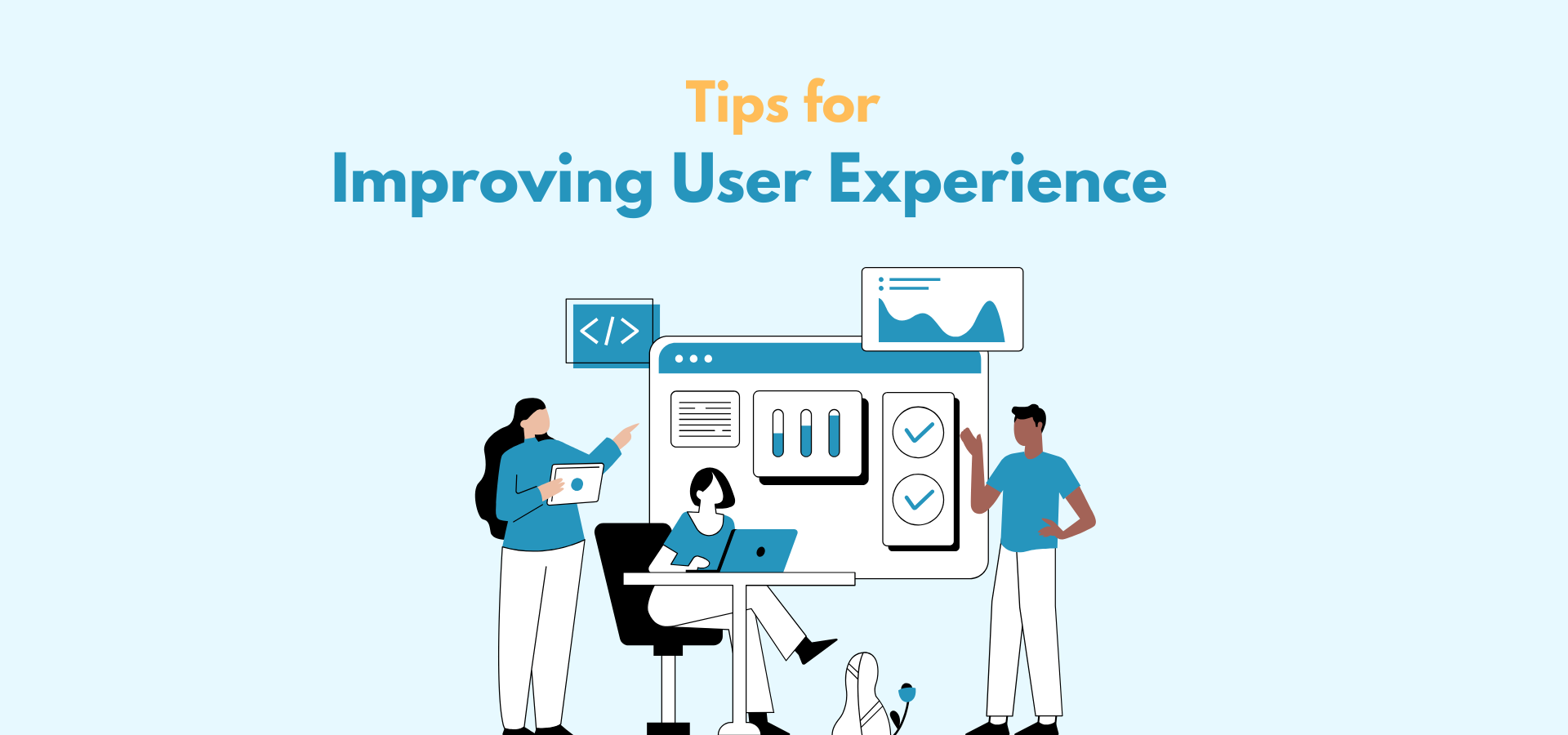
In today’s digital age, user experience (UX) is more important than ever. A well-designed UX can make all the difference in whether a user engages with your website, application, or product, or abandons it in frustration. At UXQODE, we’re passionate about helping businesses create exceptional user experiences that drive results. In this blog post, we’ll share 4 essential tips for improving user experience.
Tip 1: Simplify Navigation
Navigation is one of the most critical aspects of user experience. When navigation is simple and intuitive, users can easily find what they’re looking for, leading to increased engagement and conversion. Here are a few ways to simplify navigation:
- Organise content into clear categories: By categorising your content in a logical and consistent manner, you can help users quickly find what they’re looking for. This can be achieved by using clear and descriptive headings, and by grouping related content together.
- Limit main menu options to avoid overwhelming users: Too many menu options can be overwhelming and confusing for users. By limiting the number of options, you can make it easier for users to find what they’re looking for and reduce the likelihood of them getting lost.
- Use descriptive labels for menu items: Using descriptive labels for menu items can help users understand what each option does, and can reduce the likelihood of them clicking on the wrong thing.
- Include a search bar for easy access to specific information: A search bar can be a powerful tool for helping users find specific information quickly and easily. By including a search bar, you can reduce the amount of time users spend searching for information, and can increase the likelihood of them finding what they’re looking for.
By simplifying navigation, you can reduce bounce rates, increase user satisfaction, and drive more conversions. According to a study by Stanford University, 75% of users admit to making judgments about a company’s credibility based on their website’s design. By simplifying navigation, you can improve the overall user experience and increase the credibility of your website or application.
Tip 2: Know Your User
Understanding your user is crucial to creating an exceptional user experience. Who are your users? What are their goals and motivations? What are their pain points and challenges? By answering these questions, you can design a UX that meets the needs of your users and exceeds their expectations.
Here are a few ways to get to know your user:
- Conduct user research and interviews: Conducting user research and interviews can help you gain a deeper understanding of your users’ needs and preferences. This can be achieved through surveys, focus groups, and one-on-one interviews.
- Create user personas to guide your design decisions: User personas are fictional representations of your ideal user. By creating user personas, you can gain a better understanding of your users’ goals, motivations, and pain points, and can use this information to guide your design decisions.
- Analyse user feedback and behaviour data: Analysing user feedback and behaviour data can help you identify areas for improvement and can provide valuable insights into your users’ needs and preferences.
- Use empathy mapping to understand user emotions and motivations: Empathy mapping is a powerful tool for understanding user emotions and motivations. By creating an empathy map, you can gain a deeper understanding of your users’ needs and can use this information to design a UX that meets their needs.
By knowing your user, you can create a UX that is tailored to their needs and preferences. According to a study by Forrester, every dollar invested in UX returns $100 in return. By knowing your user, you can increase user engagement, drive more conversions, and improve overall user satisfaction.
Tip 3: Make it Mobile-Friendly
More and more users are accessing websites and applications on their mobile devices. That’s why it’s essential to make your UX mobile-friendly. Here are a few ways to do so:
- Use a responsive design that adjusts to different screen sizes: A responsive design can adjust to different screen sizes, making it easy for users to access your website or application on their mobile devices.
- Use large buttons and touch targets to make it easy to navigate: Large buttons and touch targets can make it easy for users to navigate your website or application on their mobile devices.
- Minimise load times to reduce frustration: Minimising load times can reduce frustration and can improve the overall user experience.
- Optimise images and content for mobile devices: Optimising images and content for mobile devices can improve the overall user experience and can reduce the amount of data users need to download.
By making your UX mobile-friendly, you can increase user engagement, drive more conversions, and improve overall user satisfaction. According to a study by Google, 61% of users are unlikely to return to a website that is not mobile-friendly. By making your UX mobile-friendly, you can increase the likelihood of users returning to your website or application.
Tip 4: Test and Iterate
Finally, testing and iteration are critical to improving user experience. Here are a few ways to test and iterate:
- Conduct usability testing to identify areas for improvement: Conducting usability testing can help you identify areas for improvement and can provide valuable insights into your users’ needs and preferences.
- Use A/B testing to compare different design variations: A/B testing can help you compare different design variations and can provide valuable insights into which design performs better.
- Analyse user feedback and behaviour data to inform design decisions: Analysing user feedback and behaviour data can help you identify areas for improvement and can provide valuable insights into your users’ needs and preferences.
- Use design sprints to rapidly prototype and test new ideas: Design sprints can help you rapidly prototype and test new ideas, and can provide valuable insights into your users’ needs and preferences.
By testing and iterating, you can refine your UX and create a design that meets the needs of your users. According to a study by McKinsey, companies that prioritise UX see a 10-15% increase in customer satisfaction. By testing and iterating, you can increase user engagement, drive more conversions, and improve overall user satisfaction.
Conclusion
Improving user experience is an ongoing process that requires a deep understanding of your users and their needs. By simplifying navigation, knowing your user, making it mobile-friendly, and testing and iterating, you can create a UX that drives results and exceeds user expectations. At UXQODE, we’re committed to helping businesses create exceptional user experiences. Contact us to learn more about our UX design services.

